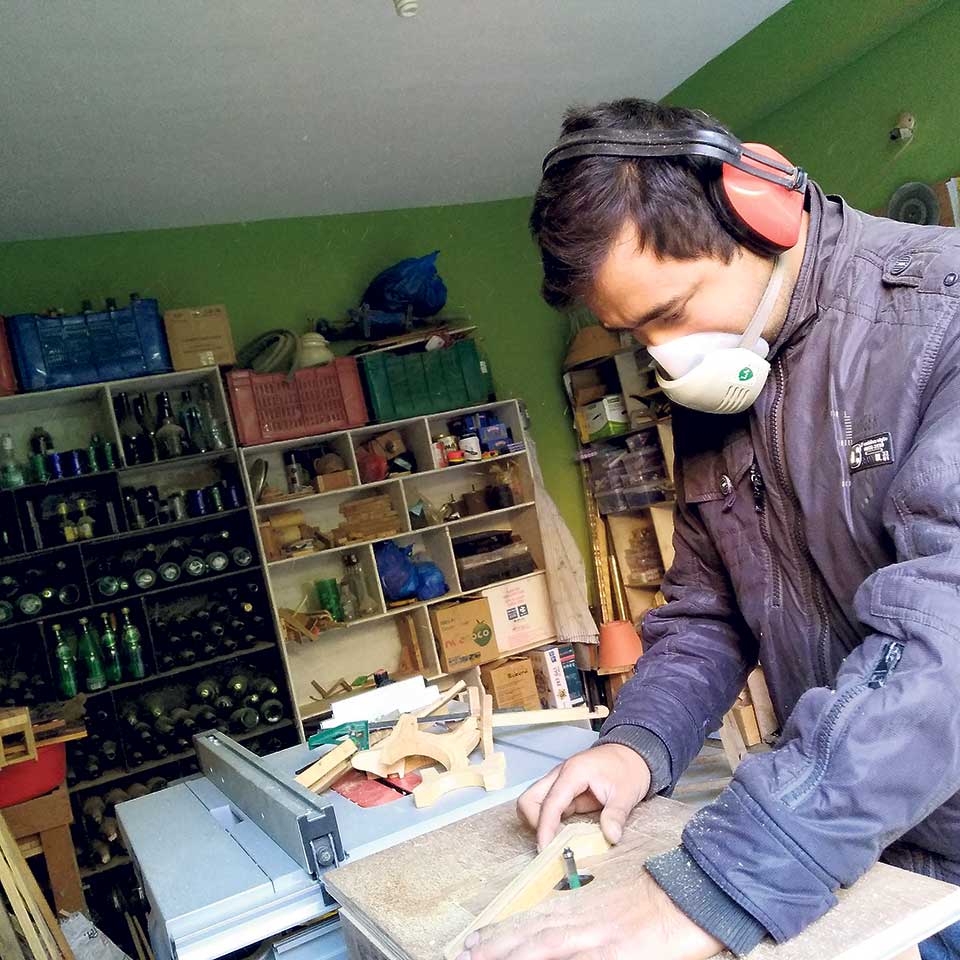Alternative Energy Promotion Center (APEC), a government agency tasked with promoting new sources of energy, has claimed that production of electricity from municipal wastes would soon become a reality.[break]
APEC aims to install at least 500 urban household biogas plants within the current fiscal year. According to APEC Assistant Director Samir Thapa, the waste-to-energy (WtE) is already a popular technology in several countries.
"Waste-to-energy is not a new concept elsewhere. But we are trying it here for the first time. We hope people will embrace the idea," Thapa said.
According to Thapa, waste produced by an average family each day can produce gas that can last 1 to 2 hours.
"Biogas can be produced even from the waste generated by a small household, though more waste is better," Thapa said.
While household waste can be used to produce only biogas, institutional waste can even generate electricity. This, of course, is good news for valley residents reeling under acute power crisis.
According to senior energy officer at AEPC Resha Piya, converting large quantities of wastes into energy is a reliable technology.
Piya stressed that WtE technology will use both institutional waste and municipal solid waste.
"Institutional scale energy system primarily comprises of biogas system for thermal energy and electricity generation. This includes the refuse generated at army barracks, orphanages, hospitals and so on. The kitchen and toilet wastes produced at such large institutions can be used to produce biogas, which can be used to cook food or produce electricity," she said.
Piya further explained that municipal solid waste also has huge potential of energy generation, basically from the organic fraction of such waste both due to its quality and content.
"This concept is very suitable in our context as we are facing problems of waste management and energy crisis," she remarked, adding that commercial wastes produced by animal farms, slaughter houses and other industries too have good potential for energy generation.
According to APEC officials, renewable energy is already popular in the rural areas of the country, basically, due to the incentives provided by the government.
The technology is being introduced in the urban areas after the government recently decided to provide similar subsidies to urban households.
"It had become necessary to promote alternative energy in urban areas, therefore, the government decision to provide subsidy must be welcomed by everyone," noted Thapa. He informed that it costs around Rs 35,000 to install a household biogas plant out of which Rs 10,000 would be borne by the government. For large scale plants, the cost is higher, but then so is the incentive, he said.
Dr Govind Pokhrel
Executive director of AEPC
Waste-to-energy sounds like a very interesting concept. Is it feasible?
It has proven to be successful technology in China and India, among other countries. Renewable energy solutions have done quite well in the rural areas of our country as well. The focus this time is to expand waste-to-energy to the urban areas, particularly in the capital.
We hope to organize campaigns to attract and engage more and more individuals and private sector to make the project successful.
What kind of campaign would this be?
We recently launched ´waste to energy bazaar´ to harvest the most innovative ideas in converting ´waste to energy´ from around the country. The objective of the bazaar is to expose and engage the business and development community in productive and inventive partnerships that will promote new approaches and ideas in waste management and economic development at the same time.
So AEPC currently does not have enough ideas to carry out the project.
It is not like that. We have already been installing biogas plants at households in the valley and we have models ready to generate electricity and biogas from large quantity of waste. But we want more and more people and private sector companies to come forward to exploit this technology. The initiative should be taken by the people themselves. They are going to invest for it and the government will provide technical support and subsidies.
Why would people be willing to pay Rs 25,000 for just 1 to 2 hours of gas that is hardly enough to cook one meal?
Though the household level installations do not sound as attractive as the institutional ones, we are certain that those who care about environment will come forward. Moreover, the price of LPG keeps rising. According to a study, a household that uses 12 LPG cylinders in a year can do with just 8 cylinders if it also uses biogas. That means the household can save 4 cylinders a year. There is immense benefit in the long run.
The art of creative reuse : Upcycling waste and upscaling the e...





































